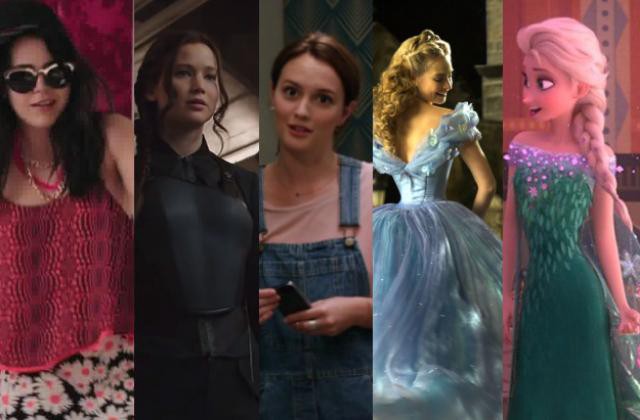What the Last Four Feature Films I Saw Taught Me About Money

Spoilers below. It should be noted that shopping and makeover scenes were critical parts of each of these feature films.
The Duff: You should absolutely buy that black cocktail dress for the girl you’ve known since childhood. Because you’re just friends. She likes that other guy, and you’re going to buy her the dress she’s had her eye on, and it’s sort of an exchange for the time she gave you her science notes, which is in turn an exchange for the time you tried to give her popularity lessons, which you only did because she promised she could help you pass your classes and stay on the football team. Wow. The economy of high school is confusing.
The Hunger Games: Mockingjay — Part 1: When the woman in charge is actually named Coin, watch out. Also, despite the fact that District 13 is an underground bunker with limited resources, people keep finding ways to make new toys and weapons. Where do they get these raw materials?
Life Partners: Sometimes people grow apart because they make different choices. Other times they grow apart because different things happen to them. One person meets a future partner while the other person has a bunch of dates that go nowhere. One person gets promoted and the other person gets fired. But what really makes the difference here, what really pushes people apart, is money and responsibility and opportunity and access. Get enough of that between two best friends and eventually one of them will say “I don’t know, I guess I’m just in a different life stage than you right now.” (Also: This is the best movie I’ve seen in a long time. I liked it so much that I watched it twice.)
Cinderella: Amanda Pampuro has said just about all that needs to be said on the economics of Cinderella, so I urge you to read her piece. Several of the points she made in her article were referenced directly in the movie, specifically the idea that women in Fairy Tale Time Period could only find economic security through marriage. I did wonder why, if times were so tight, Lady Tremaine didn’t sell some of the gorgeous furniture in the house or, better still, take in boarders and enjoy a position of power as a landlady.
There’s also this great moment where Lady Tremaine makes Cinderella an offer that would solve both of their problems: without spoiling anything, she says “I’ll use my resources as an adult woman with some money to help you make your way in the world, but then you have to use the resources you have earned with my assistance to help support me and your stepsisters.” Lady Tremaine immediately sours her own offer by Being Evil, but if she hadn’t, that would have been a great ending to the Cinderella story, and one that provided an entirely different message about family and responsibility.
BONUS: Frozen Fever: Money doesn’t matter if you can just make whatever you want with your ice powers (including things unrelated to ice, like clothes). I hope that the upcoming Frozen 2 is about how Elsa accidentally destroys the global economy.
Support The Billfold
The Billfold continues to exist thanks to support from our readers. Help us continue to do our work by making a monthly pledge on Patreon or a one-time-only contribution through PayPal.
Comments